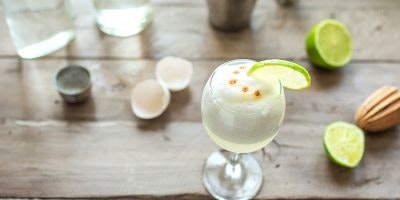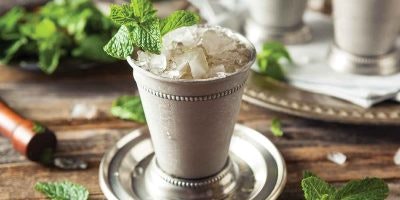For well over two hundred years, gin has been defined by the London Dry style. Juniper forward and thin on the mouth is what most people imagine the spirit to be. But a renaissance—some would even dare say, a revolution—is upon us. Just as the sun eventually set on the English Empire, so too shall fade the stereotypes regarding what proper gin ought to be. As craft producers continue to change the game, this is how gin is writing itself into the future.
PHILLY STYLE GIN
When Andrew Auwerda started Philadelphia Distilling in 2005, gin was synonymous with several names. Tanqueray, Beefeater, Bombay—none of them hailed from this side of the pond. “The gin category was dominated by the big boys from Britain,” he recalls. At the time, there were less than 50 craft producers in the entire US compared to ~1500 today. Auwerda was daring enough to take on the titans, armed with the belief that a proper point of separation would propel his products to success.
Bluecoat Gin / Photo Credit: Bluecoat Gin
“We wanted to make an American dry gin that reflected a modern spirit, and not just a copy of a British tradition,” he remembers. The first step was a steady source of unique, quality-driven ingredients: Mediterranean juniper berry, which is softer, skewing towards the American palate; organic sweet orange peels; and a litany of chemical-free herbal adjuncts. “Most important to us is that our botanicals be organic for reasons both environmental, and flavor-related,” Auwerda explains.
The result was Bluecoat American Dry Gin. In its distinct and stately cobalt bottle, it quickly became a recognizable fixture on back bars from coast to coast, proving that American gin drinkers were thirsty for something new.
LONDON GIN IN THE 21ST CENTURY
It turns out, they weren’t the only ones. Four years later, in London, a similarly audacious crew of craftsmen were able to secure a license for a new gin distillery—the city’s first in over 200 years. Sipsmith, as the brand became known, was determined to revive a bygone era.
Jared Brown of Sipsmith / Photo Credit: Sipsmith
“We reached back to before production was industrialized,” notes master distiller Jared Brown. “These days, as much as 97% of the world’s volume of London Dry is made from gin concentrate. We make gin the way it used to be made. We add no spirit after distillation, just water to bring it to bottling strength.”
Brown positions his product as the benchmark for historic London Dry, yet it bears minimal resemblance to the astringent, juniper-concentrated examples of modern day. Attention to detail, plus dedication to the ingredients and the process had a seismic impact. In the eight years since Sipsmith set up shop in West London, more than 300 craft distilleries have followed suit across the city.
DUTCH DRY GIN
Turning to the past to inform the future is something to which Carl Nolet Jr. can certainly relate. The native Dutchman’s family has been distilling just outside of Rotterdam for 325 years. “As more craft gins enter the market it was important that we keep Nolet’s Finest Gins focused on its authentic roots,” he recalls of the spirit he created with his dad and brother. “At the core, Nolet’s Finest Gins blend tradition and innovation. Silver features signature botanicals of Turkish rose, peach and raspberry.”
Carl Nolet Jr., Carl Nolet Sr. and Bob Nolet / Photo Credit: Nolet’s
Although he hails from a land known for genever—the spiritual precursor to London Dry gin—Nolet was savvy enough to intuit the value of evolving his liquid to fit modern palates. As a result, Silver stood out as an elegant expression for folks intimidated by juniper’s jarring pine needle notes.
MORE THAN JUST LONDON DRY
Today, Nolet’s is joined by a trove of so-called Modern or New Wave gins. These gins steer into unchartered waters with all sorts of herbs, fruits and vegetables. Most famously, the runaway success of Hendrick’s—with it’s cucumber-fueled essence—affixed global attention to the New Wave category.
Boodles Mulberry Gin / Photo Credit: Boodles
Following closely behind was a revival of once-esoteric styles such as Old Tom and sloe—an infusion made with tart, miniature plum-like berries native to Britain. Boodles now offers a sweeter, more accessible variation made with Mulberry—the first of its kind in the States. Even barrel-aged is becoming a thriving sub-category, as whiskey drinkers enter the fray.
The rapid reconceptualization of gin’s identity is feeding its own massive growth. The more varieties brought to market, the more drinkers willing to explore a once-polarizing style of spirit. “Gin is not a trend any more than good wine,” Brown points out. “People discovered wine beyond jugs of California burgundy and chablis a few decades ago and have never looked back. It’s the same for gin. The renaissance is truly upon us.”
Time to find your next favorite gin.
With Distiller, you’ll always know what’s in the bottle before you spend a cent. Rate, Review and Discover spirits! Head on over to Distiller, or download the app for iOS and Android today!



